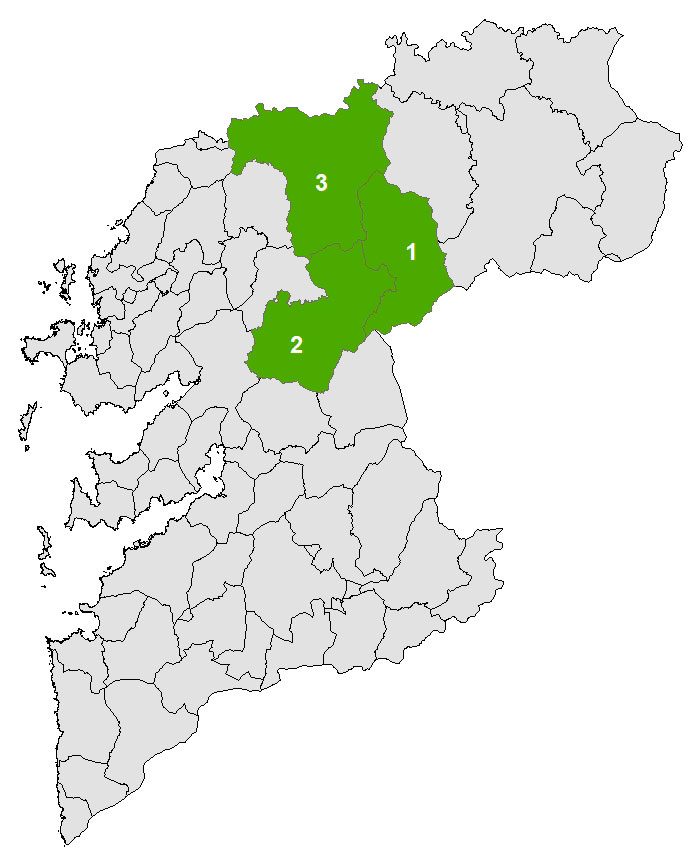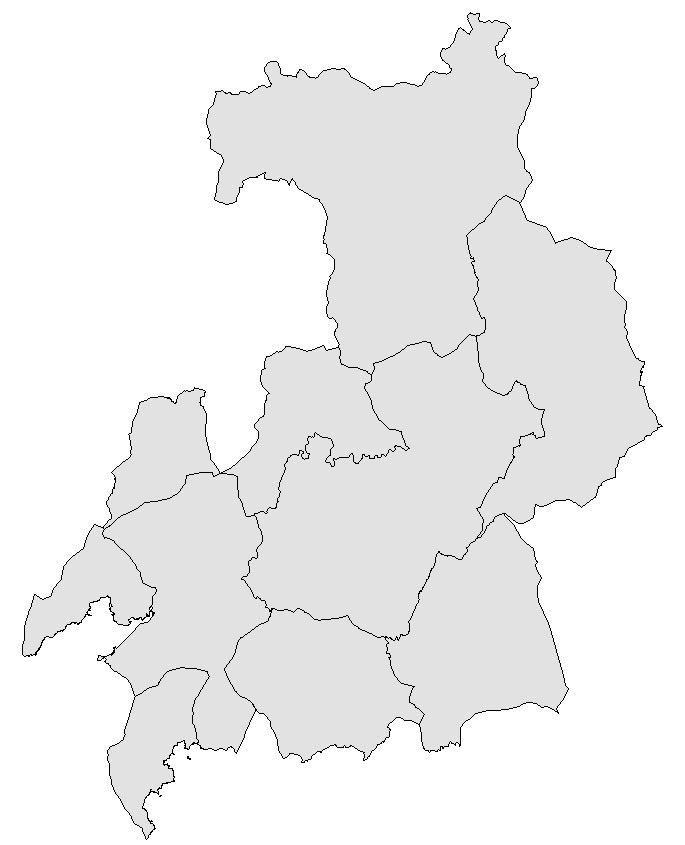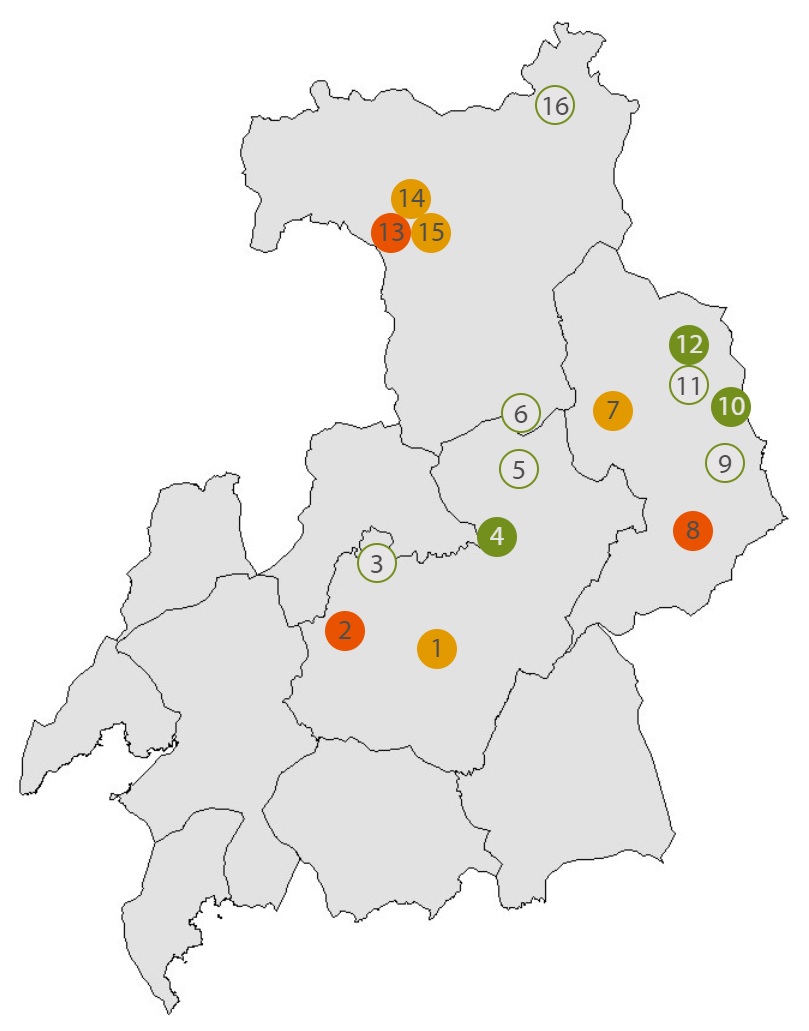11.EXPERIENCE THE REGIONS OF TABEIRÓS-TERRA DE MONTES AND PONTEVEDRA
A WORLD OF RICHNESS IN THE COUNTRYSIDE
A WORLD OF RICHNESS IN THE COUNTRYSIDE
Be immersed in landscapes of vast valleys with rivers, leafy woods and hills and enjoy the scents, colours and feelings that will take you to rural scenes. Discover fertile meadows immersed in a natural environment, monasteries and manor houses, small villages, patches and hórreos (typical Galician granary houses) that evidence a local agricultural tradition with high quality products as well as festivals and customs.
Visit the towns of Forcarei, Cerdedo-Cotobade and A Estrada, in the region of Tabeirós, and enjoy with your five senses its vast valleys and hills where rivers, such as the Ulla, the Umia or the Lérez and their tributaries create fertile landscapes. The monastery of Aciveiro and its surrounding constructions, such as the neveiras (ice-storage walls) – used to preserve and store the valued ice – overlook the region of Terra de Montes.
The richness and rural diversity can be experienced at its museums. They provide information about the stonemasons, muleteers and emigration. The work of the stonemasons can be appreciated in the popular architecture (hórreos of Pedre and Ermida, bridge of Andón in Aciveiro, bridge of Serrapio-Cerdedo, bridge of A Bouzada, in the village of Soutelo de Montes, tower of Barciela, in Castrelo-Forcarei, the churchs of Moreira and Codeseda, both in the town of A Estrada, and the monastery of Aciveiro).
The natural spots on the banks of the Ulla River, the bridges and the mills scattered all along the Lérez River immerse us in leafy, humid and green riverside forests. Moreover, from the top of O Candán Hill, we can admire large fields and oak groves in the background. The magic of the woods accompanies us through abandoned villages, such as the one of Grovas or the old village of Vichocuntín , Arufe and Godela, which have been silent witnesses of a bustling past that has now disappeared because the locals had to leave the countryside in search of a better life.
There are also traditional festivals and performances such as the Rapa das Bestas (an event where the manes of the wild horses are cut), held in the town of Sabucedo, or festivals offering delicious food like the Salmon Festival in the town of A Estrada and the festival of the richada (typical local stew) in the town of Forcarei. Cheese is accompanied by cider or filloas (Galician crepes).

- 1 - Forcarei
- 2 - Cerdedo-Cotobade
- 3 - A Estrada


MUSEUMS
-
It is a remarkable museum of traditional Galician music, in the village of Viascón, specialised in the bagpipe (gaita). It also exhibits other traditional musical instruments and old photographs. The Casa da Gaita introduces us to the life of Ricardo Portela, which was one of the most renowned bagpipers in Galicia.
By appointment only -
This ethnographic centre, located in an old traditional house, reveals how rural life was in the region between the end of the 19th century and the 1970s: livestock farming, agriculture and trades, housing, food, childhood, traditional women’s or men’s tasks, and the phenomenon of rural exodus and emigration.
By appointment only -
This museum, located in the former municipal slaughterhouse and dating from 1924, shows the traditional life of the local people from A Estrada. It exhibits objects used in the old farming activities, traditional trades and everyday life. The replica of a classroom of an early 20th-century school and a display of traditional toys show how childhood used to be in rural areas.
By appointment only
OTHER POINTS OF INTEREST
-
It is one of the most renowned groups of hórreos (typical granary houses) in Galicia, called Eira Grande, which consists of 12 hórreos arranged around a big square near the Eira do Pallal, where peasants used to thresh the rye and husk the corn. The hórreos, built in stone and wood, and provided with pitched roofs, have been restored.
-
It consists of 21 hórreos arranged around a cruceiro (stone cross) and the shrine of the Virgin of Os Remedios, in the middle of lands and countryside houses.
-
The village of Sabucedo hosts one of the most peculiar traditions in Galicia, which shows the symbolic strength of the horse. This festival is celebrated in July and consists of bringing the herd of horses that live wild at the Montouto Hill, and grouping them in a big fence. There, the aloitadores and aloitadoras overpower the beasts in order to cut their manes.
-
Ice-storage walls located 800 metres above sea level, which date from the 17th century, and were linked to the monastery of Aciveiro. They consist of two large-capacity waterholes to store ice that was used to preserve food. The house of the neveiro, the person responsible for the ice production, has been preserved.
-
Located near the source of the Lérez River, it was founded by a community of twelve monks in 1135, but soon they were more than 100. The church is a good example of the Galician Romanesque although the original façade was rebuilt in the 18th century. One of the activities carried out by the monks was the trade of ice produced in the neveiras (ice-storage walls) built in O Candán Hill.
-
Although the origin of this typical manor house dates back to the 13th century, most of the buildings that have been preserved are in the Baroque style and date from the 18th century. It has a large garden, an orchard, a church devoted to Saint Anthony of Padua and several houses for the day labourers. The proprietors of the pazo also owned the wood Fraga da Cerrada, the oak grove of Ouriles and the meadows of Subatán and Badoucos. The pazo is popularly known as the Galician Versailles due to its beautiful gardens.
CULINARY MOMENTS
-
This food festival promotes the culture and tradition of the petote, which is part of the cocido and consists of a boiled wheat and corn flour bread roll that is served cut into slices.
-
A festival that promotes the organic cider produced in A Estrada and in other neighbouring cider-making areas.
-
A festival of Tourist Interest in Galicia held in May which pays tribute to the salmon. It is prepared both in the traditional way and as part of innovative recipes. Other entertainment and fun activities are also held.
NATURAL SPOTS
-
It is a wood with centuries-old oaks, chestnut trees and leafy ferns, vines and mosses. A shrine devoted to San Xusto, where a pilgrimage is held every August, has been preserved. From there, you can access the thermal baths of San Xusto, with sulphur-fluoride waters.
-
It is more than 1,000 metres high. It has large open-air areas and wide meadows, brushwood, and vast oak groves. There is a signposted trail, and at the top there is a viewpoint with panoramic views of the town of Silleda.
-
This 15-kilometre trail follows the course of the Lérez River, and boasts no less than 40 bridges and a group of 12 abandoned mills. The most remarkable bridges are A Ponte Vella de Andón, A Ponte do Crego, A Carballa, Maril and Gomail.
NATURAL SPOTS
- Ulla River
This 132-kilometre-long river is the third longest in Galicia. It has a high landscape value: alder trees, willows, birch trees, oaks, laurels and some chestnut trees are planted along its banks. It flows slowly, –with some stretches of rapids– until it reaches the magnificent coastal inlet Ría de Arousa.
[+] INFO - Small village of Grovas
It is located at the O Candán Hill, and near the canyon of the Grovas River. It consists of traditional houses that were part of a tin mining small village where oak charcoal was sold. It was abandoned in 1969.













